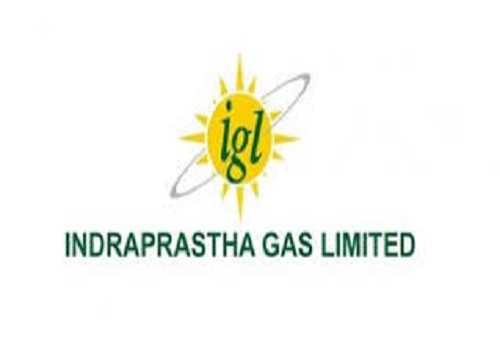Natural Gas Quarterly Report : Global natural gas prices traded positive lifted by colder weather, rising by MOFSL

Follow us Now on Telegram ! Get daily 10 - 12 important updates on Business, Finance and Investment. Join our Telegram Channel
According to Motilal Oswal Financial Services, Global natural gas prices traded positive lifted by colder weather, rising geopolitical tensions. U.S. natural gas prices are supported by colder weather forecasts for late November into early December, leading to higher heating demand. Expansion in electricity output in the U.S. is further boosting natural gas usage. U.S. electricity demand is projected to surge nearly 16% over the next five years, more than triple last year's estimate, driven by new data centres and factories consuming significant power. Inventories are currently 6% above the five-year (2019–23) average, despite less-than-average injections into storage throughout the entire injection season, which runs April 1 through October 31. European natural gas prices have reached a fresh one-year high of approximately, supported by concerns over Russian supply and strong demand following a period of unusually cold weather
U.S. Natural Gas inventory:

Natural gas is typically injected in summer, but occasional withdrawals occur, especially in Pacific and South Central regions. U.S. inventories are starting winter 2024–25 with the most natural gas since 2016. Natural gas were less injected than the five-year average in nearly every week during the 2024 injection season, in part because starting inventories were relatively full. Natural gas inventories are expected to remain above the five-year average throughout winter. Net injections during the injection season totaled 1,640 Bcf, 21% below the five-year average. EIA forecasts 1,957 Bcf of natural gas withdrawals for the 2024–25 heating season. Projected inventories at the end of March 2025 are expected to be 6% above the five-year (2020–24) average
Europe Scrambles for Supply


Key markets like the Netherlands already have storage levels in the low 80% range. European gas inventories were 92.58% full, down from 99.37% at the same time last year. The average rate of withdrawals this winter is 0.039%, contrasting with the 0.09% injection rate observed last year during the same period. Rising winter demand, reduced output, and increased exports to Europe are driving a surge in U.S. natural gas prices. Record-high storage levels exist, but concerns about future supply security persist as demand exceeds production. Growing natural gas demand from data centers is expected to further tighten the market and sustain price increases. Germany, as the rest of Europe, gets a lot of gas in liquefied form from the United States, driving demand there higher.
Demand Centres
Natural gas electricity generation grew by 3% in 2024 due to low fuel prices. Solar power generation increasing from expanded U.S. generating capacity. Anticipated 5% reduction in natural gas generation between 2024 and 2025 as prices rise. U.S. electricity demand is expected to surge nearly 16% over the next five years, driven by data centres and factories. Renewable energy output decreased by lower wind speeds in the U.S. and Europe. Increased reliance on natural gas-fired power plants due to reduced renewable generation. EIA forecasts a 2% increase in electricity sales this winter compared to last.3% more residential electricity sales expected from colder weather. Winter heating season projected to have 6% more heating degree days despite a warm November start.
Flat U.S. production


U.S. marketed natural gas production in 2024 remained flat at an average of 113 Bcf/d compared to 2023. Early 2024 production cuts by shale and tight formation gas producers resulted in lower output compared to 2023. Production in the Permian Basin increased in 2024, despite overall flat output in other regions. Haynesville and Appalachia production was impacted by record-low natural gas prices early in 2024, leading to curtailed output. Permian Basin gas production, linked to crude oil production, grew amid low natural gas prices. 2025 production forecast: 114 Bcf/d average, a 1% increase, driven by 6% growth in the Permian region and 5% growth in Eagle Ford. Slight production declines expected in the Appalachian Basin and other U.S. regions in 2025. Rig count has decreased since its 2022 high of 166 rigs, down from the pandemic low of 68 rigs in July 2020.
Above views are of the author and not of the website kindly read disclaimer












 320-x-100_uti_gold.jpg" alt="Advertisement">
320-x-100_uti_gold.jpg" alt="Advertisement">












